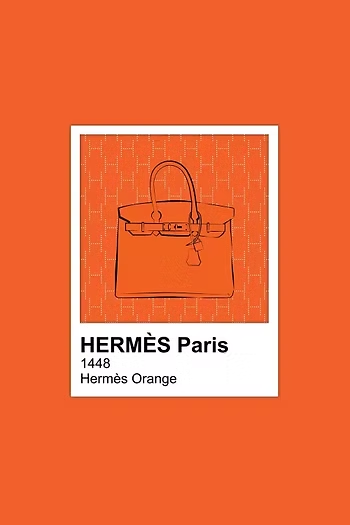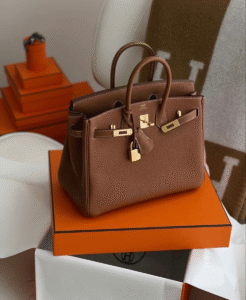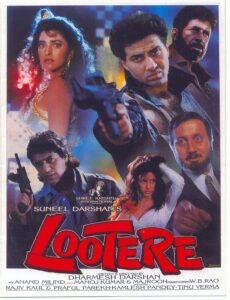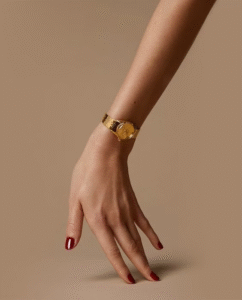
Hermès, the iconic French luxury brand rose from humble origins – from a workshop that catered for saddlery and fine equestrian leather goods to being ranked the world’s most valuable luxury brand despite its non-conglomerate status. Thierry Hermès, the institutor of the house of Hermès, quickly gained recognition for his high-quality craftsmanship of harnesses and bridles winning several awards while garnering significant popularity among the noblemen of Europe. His heir, Charles-Emile Hermes along with his sons, then proceeded to focus on international retail sales and crafting the ‘Haut a Courroies’ which went to become the prototype of the first handbag. Though the first handbag was made for Emile Maurice’s wife, it garnered international recognition and a cult following when it was photographed in the hands of Grace Kelly, Princess of Monaco. Hermes went on to launch one of their most recognisable goods, the Sac a depeches bag, that popularly became to be known as the ‘Kelly’.
THE HERMES LOGO & COLOUR TRADEMARK
The ultra-luxury French fashion house’s patrons weren’t always treated to its iconic orange-hued packaging. Hermès, originally, had its goods packed in cream-coloured boxes.

During World War II, Paris being occupied by the Nazis was disastrous to its inhabitants as well as the businesses – the shortage of food, and materials forced the then 105-year-old orange-hued brand to abandon its cream colour boxes. Emile Hermès had to forgo its original packaging colour in favour of the undesired orange hued boxes- the only colour in possession by his supplier. He, then, went on to add a horse-drawn eye logo and brown ribbon to the box. Thus, the iconic Hermès packaging was born.
Over time, Hermès’ orange altered, but by the 1960s, it stabilised to become the hue that is recognised by people across the globe. Although the legal status of the shade, which is not one of the Pantone colours and is therefore not precisely categorised, is interesting, the brand’s constant use of colour has made it a true indicator of origin.
Despite the fact that Hermès has filed trademarks for its colour all over the world, the European Union Intellectual Property Office rejected registering the colour as a trademark in 2005. The judges concluded that the customers do not exclusively identify brands by colour and that, taken as a whole, registering a colour would amount to granting an unreasonable monopoly. They also opined that orange is too popular a colour to be associated with a particular brand and lacks distinctiveness to be granted the exclusive protection of a colour trademark. Appeals were submitted throughout time, but they were turned down. Currently, the legal conflict is ongoing.
The world-renowned fashion house’s logo is an exquisite coach, a horse buckled into the harness, with a groom standing in front of it. This logo is believed to be the brand’s reminder of its roots – producing equestrian accessories for aristocratic patrons.
However, the logo, itself bears a striking likeness to the French portrait and animal painter Alfred de Dreux’s “le Duc Attele, Groom a L’Attente”.
THE HERMES APPEAL & PHILOSOPHY
Jean Louis-Dumas, the former CEO of Hermès quoted “We don’t have a policy of image, we have a policy of product.”

Being one of the oldest family-owned-and-controlled companies, the brand’s philosophy is deeply engrained in its premier quality and craftsmanship. Although the Hermès family has owned, managed, and led the firm for many generations, the core values of the company have never been compromised. Hermès products are almost entirely manufactured in their French workshops (Ateliers Hermès), with a strong emphasis on quality. Having shunned mass production and outsourcing, the brand continues to celebrate its in-house artisans and their work, each product handcrafted in their ateliers with increased concentration on discipline and precision with the unlimited creative freedom to design products that are functional while being equivalent to high-art.
Each bag is masterfully crafted from beginning to conclusion by a single artisan, which illustrates the production of mere two pieces per week. Each leather worker has their own set of tools that they eventually take home with them when they retire and have minimal to no intervention in the fellow artisan’s craft of the same bag.
Hermès uses hunger marketing to enhance the brand image, supply and demand to stimulate consumers’ desire to buy and consolidate its cutting-edge image. Serving consumers with attention to detail, the scarcity of Hermès products allows consumers to purchase products with a high degree of exclusivity. The ardent goal of Hermès, as a business to stay exclusive is what fuels the platforms of quality and originality. Since the company does not want to present its brand or its products as mass-market or even premium luxury, the atmosphere of exclusivity is crucial for the business. The attitude and goal have always been to continue providing “ultra-premium luxury,” which is expensive and out of reach for most buyers.
These values are reflected in the fact that the company has no marketing division, with only intuition and creativity being the two main forces driving the company forward.








